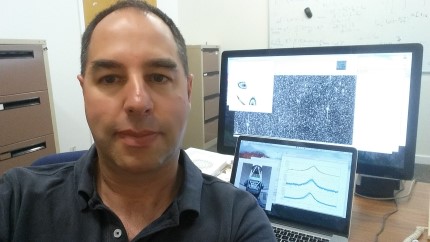Journey to the Earth beyond Earth…

Associate Professor Michael Albrow, University of Canterbury
Posted: Thu, 3 Nov 2016
Since the ground-breaking discovery of the first planet outside our solar system (extrasolar planet) in 1995, the quest to explain the origin and evolution of planets and life has intensified. However, traditional methods used to locate extrasolar planets suffer from biases that mean they mostly detect planets that are located at distances from their parent star that are much less than the distance of the Earth from the Sun.
A new project funded by the Marsden Fund and led by Associate Professor Michael Albrow from the University of Canterbury’s Physics and Astronomy Department, will use a network of state-of the-art telescopes (KMTNet) located around the Southern Hemisphere to discover just how many planets there are in our Milky Way galaxy.
Together with Professor Andrew Gould from Ohio State University, Associate Professor Albrow will develop advanced image processing and computational analysis techniques that will enable high-resolution data of tens of millions of stars to be collected every 10 minutes. In contrast to previous techniques, this new system will be able to detect planets with masses less than that of Earth.
Ultimately, Associate Professor Albrow hopes to discover planets of similar size to Earth that could potentially support life.
This study will enhance our knowledge on planetary formation and the evolution of life, and contribute significantly to our understanding of the prospects for life outside planet Earth.
Total funding: $870,000 (excl. GST) over 3 years
Researchers: Associate Professor Michael Albrow, Department of Physics and Astronomy, University of Canterbury, Private Bag 4800, Christchurch 8140
